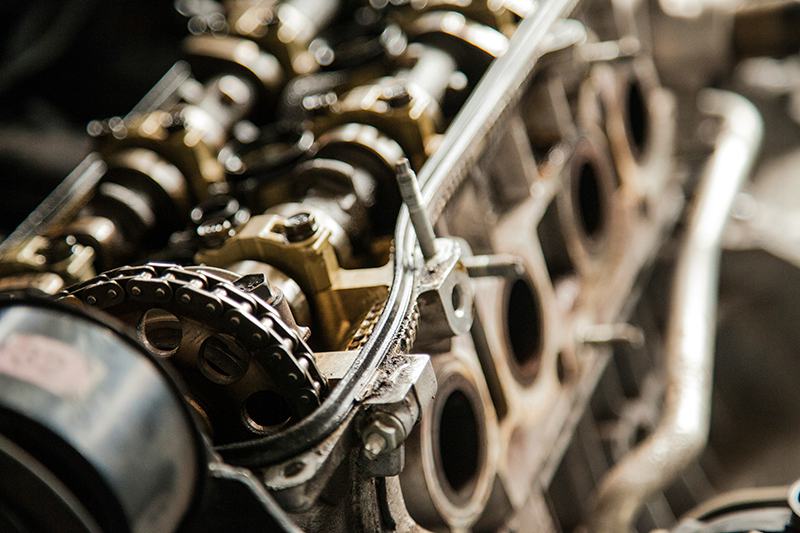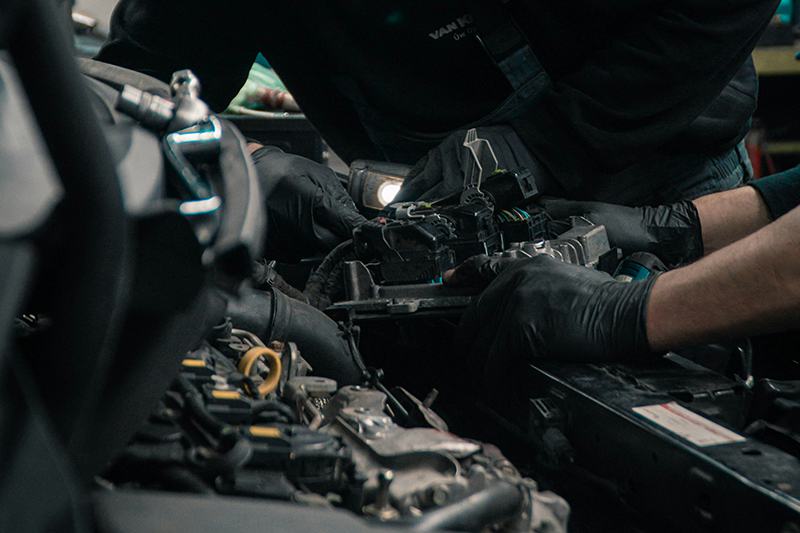Loading
The automotive borescope (also known as a "endoscope") has become an indispensable tool in the auto repair industry, giving the mechanic a pair of eyes that can peer deep into the vehicle's interior. An automotive borescope allows direct observation of narrow or enclosed areas without disassembling or breaking the vehicle.
Generally speaking, automotive borescopes can be used to inspect the internal condition of key assemblies such as the engine, transmission, fuel tank, and brake system.

The following are components and specific applications that can be inspected in detail with an automotive borescope:
I. Engine System Inspection with an Automotive borescope (The Core Application Area)
The engine has a complex structure and numerous internal parts, making disassembly and inspection time-consuming and labor-intensive. An automotive borescope provides a convenient and quick way to inspect the interior of the cylinder.
1. Internal Cylinder:
An automotive borescope can inspect carbon deposits: Observe the severity of carbon deposits on the piston crown, cylinder walls, valve heads, and combustion chamber to determine engine operating conditions. Inspect for wear and scratches: Inspect the cylinder wall (bore) for strain, scratches, and wear steps (out-of-round). Damage Inspection: Check for corrosion or breakdown (burnt top) on the piston top, which is very common when the engine is low on oil or at high temperatures.
2. Valvetrain:
The automotive borescope can be inserted through the spark plug hole or the fuel injector nozzle to inspect the back of the valves (intake and exhaust) and the stem for signs of carbon deposits, erosion, or bending.
3. Oil Passage Inspection:
The automotive borescope can not only inspect the crankcase interior but also the shaft oil passages to check for patency and sludge blockage. Because the oil passages are narrow, a probe smaller than 4mm is generally required to penetrate. Furthermore, oil contamination is present, requiring the automotive borescope to meet IP67 standards to prevent damage.
II. Transmission System Inspection with an Automotive borescope
1. Automatic Transmission: Insert the automotive borescope through the oil dipstick hole or the oil pan port to inspect the clutch plates and brake bands for wear (e.g., erosion or peeling).
Inspect the torque converter interior (requires specialized equipment and techniques). Check the valve body oil passages for cleanliness and the presence of metal debris.
The internal structure of the transmission is complex, and the borescope probe must bypass it to inspect specific areas. A steerable lens is particularly important, not only facilitating internal observation from all angles but also allowing for easy internal steerage.
III. borescope Inspection of the Fuel System
1. Fuel Injector: Without disassembling the device, the borescope can be used to inspect the injector for carbon deposits and blockages.
2. Fuel Tank Interior: Pass the borescope through the fuel tank opening or remove the fuel pump assembly to inspect the tank interior for rust, impurities, or colloid deposits, or to check for small objects lost in the tank (such as the fuel cap).
Because the fuel system contains flammable materials, the borescope is explosion-proof to prevent the risk of electric sparks.
IV. borescope Inspection of the Cooling System
1. Cylinder Water Channel: Remove the water temperature sensor or thermostat and insert the borescope probe to inspect the engine water jacket for scale, rust, or blockage.
V. Brake System Inspection with an Automotive borescope
1. Master and Slave Cylinders: For brake master cylinders that are difficult to remove, an borescope probe can be used to inspect the piston and seals through the oil well opening.
VI. Other Narrow Spaces
1. Air Conditioner Evaporator: This is a very practical application for an borescope. Inserting the borescope probe through the air conditioner drain pipe or blower inlet allows direct inspection of the evaporator fins for accumulation of dust, mold, leaves, and other debris, allowing direct identification of the source of air conditioner odors.
2. Door Interiors and A/B/C Pillars: When repairing an accident vehicle or inspecting a used car, inspect the interior for mud, water stains, and rust to determine if the vehicle has been submerged in water or has hidden damage.
3. Inspecting Hidden Bolts and Clips: For hidden fixings, use an borescope to verify their location and condition to avoid damage caused by blind disassembly.
When choosing an automotive borescope, in addition to the aforementioned considerations, you should also consider features such as LED lighting, display resolution, direct-view or test probe, and corrosion resistance based on your specific inspection needs.

Advantages of using an automotive borescope: It eliminates the need for disassembly and allows diagnosis while the vehicle remains intact, significantly reducing repair time and labor costs. It allows for intuitive identification of problems, improving diagnostic accuracy. Furthermore, it allows for regular inspection of internal wear and tear to prevent future problems. It can also be used for used car inspections, effectively detecting vehicles that have been damaged, flooded, or have had their odometer tampered with.
In summary, an automotive borescope is primarily a diagnostic tool used to inspect the working condition of enclosed, precision components within a vehicle. It perfectly solves the problem of not being able to see inside components and is an indispensable piece of equipment for modern vehicle maintenance and inspection.